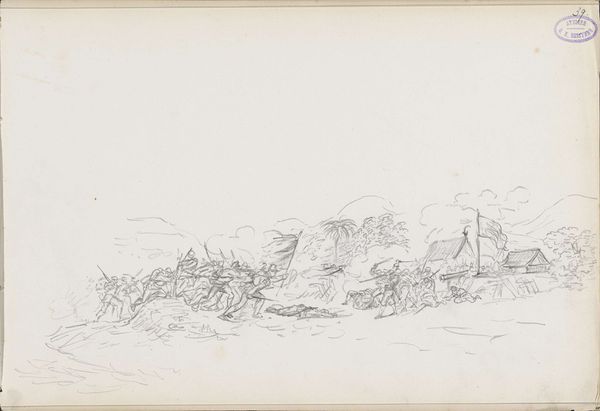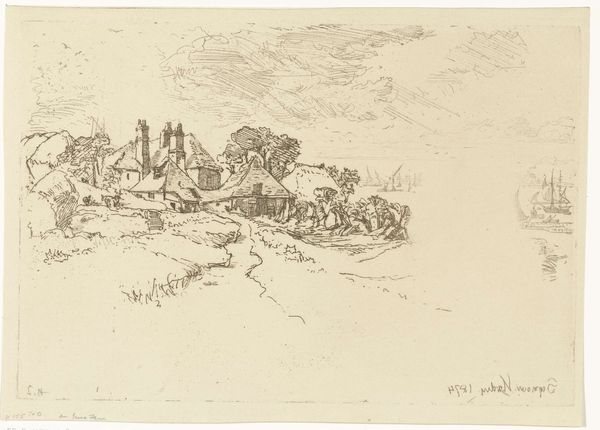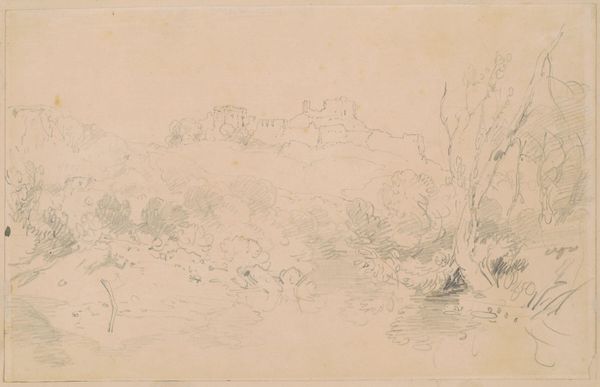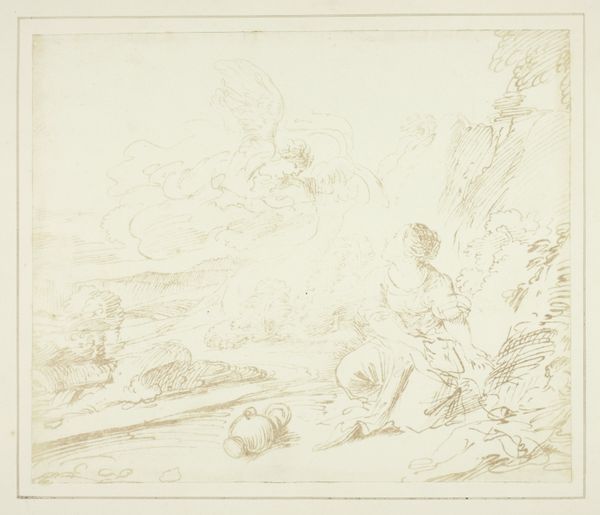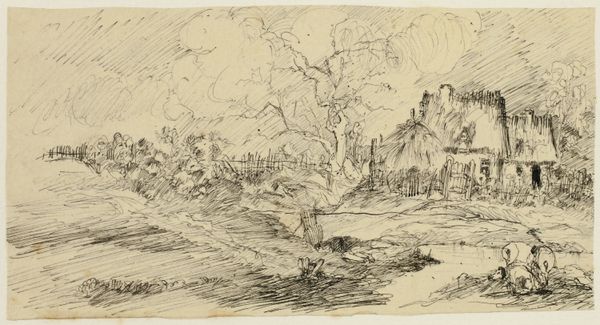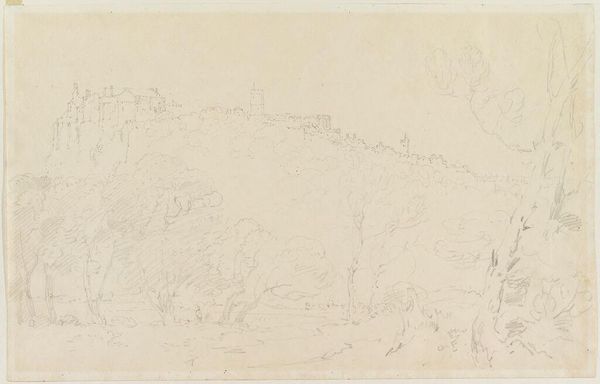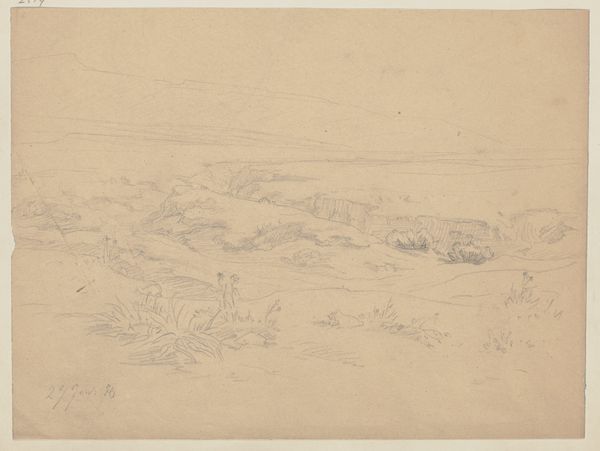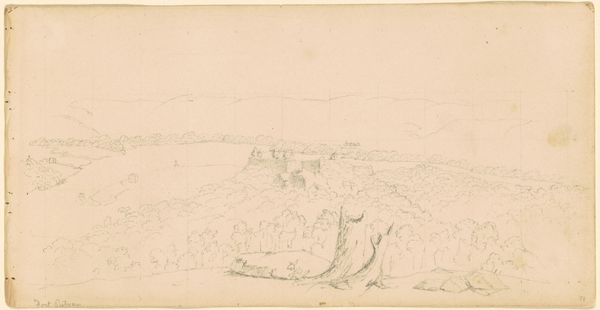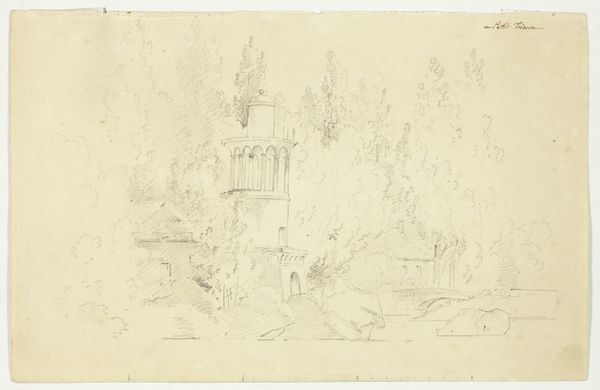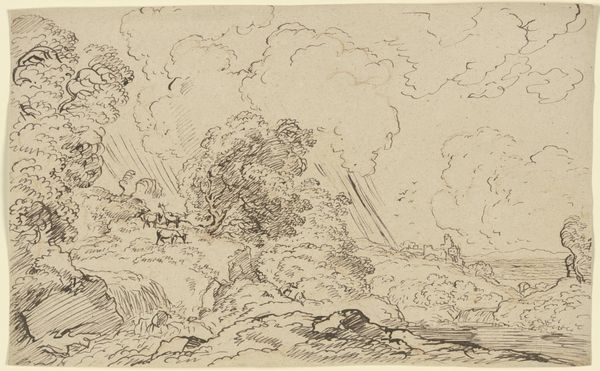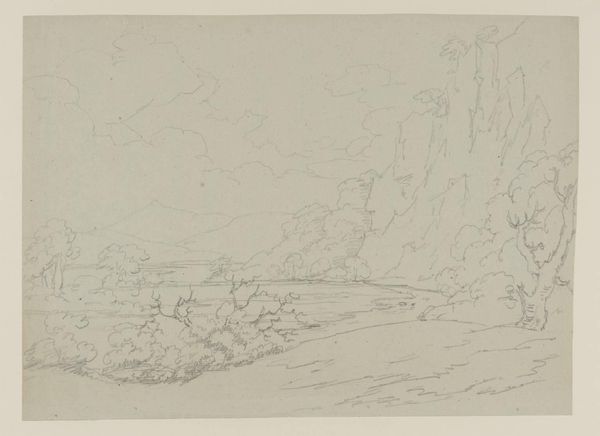
drawing, pencil
#
drawing
#
pen sketch
#
landscape
#
pencil
#
academic-art
#
realism
Dimensions: height 433 mm, width 584 mm
Copyright: Rijks Museum: Open Domain
Curator: Before us, we have Hendrik Voogd's drawing, "De wasplaats bij Marino", placing us somewhere between 1778 and 1839. Executed in pencil and pen, this piece invites us into a serene, perhaps even idealized landscape. What’s your first impression? Editor: My initial feeling is a sense of detachment, like observing a world operating on a different plane of reality. There's a clarity to the sketch that renders it accessible yet unreal. I can't quite put my finger on why. Curator: That's fascinating. It might be the way the artist uses light and shadow to create depth. Voogd, steeped in the classical tradition, likely viewed this landscape as an opportunity to express harmony. Look how the architectural elements, like the tower, integrate with the natural forms of the land. Do you feel it's promoting a political agenda? Editor: Not overtly. But there’s always a subtle narrative at play. Think about the lives of women, for instance, often relegated to spaces like "de wasplaats", which translates to the wash place or laundry. Voogd chooses this ordinary domestic sphere. Does he consider this a 'feminine space' for the wash place to be so harmonically located in an Italian picturesque? Curator: It’s a perspective well worth considering. Laundry, after all, is cyclical; so is human interaction within communal landscapes. The buildings feel eternal; it’s that suggestion of something long-lasting. Voogd may well be connecting these everyday tasks to a larger sense of time and place. It is worth considering if this location may bear connections to other iconographies and other landscapes as well? Editor: And there lies the tension. Is he documenting a place, or projecting an ideal of labour, the "feminine mystique" into that very place? Curator: A delicate balance, as it often is. By choosing this scene, the artist engages in a broader conversation about life, labour and legacy—it can serve as an excellent window into a particular era. Editor: Ultimately, the image makes me reflect on how our perspectives and positions are always inscribed in artworks, which are deeply rooted in socio-political conditions. Curator: Yes, whether consciously or unconsciously. An enriching encounter with a historical image indeed.
Comments
No comments
Be the first to comment and join the conversation on the ultimate creative platform.
